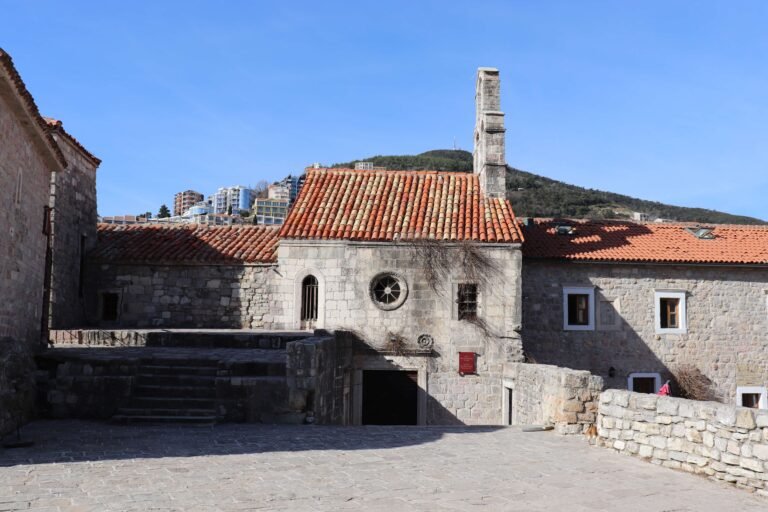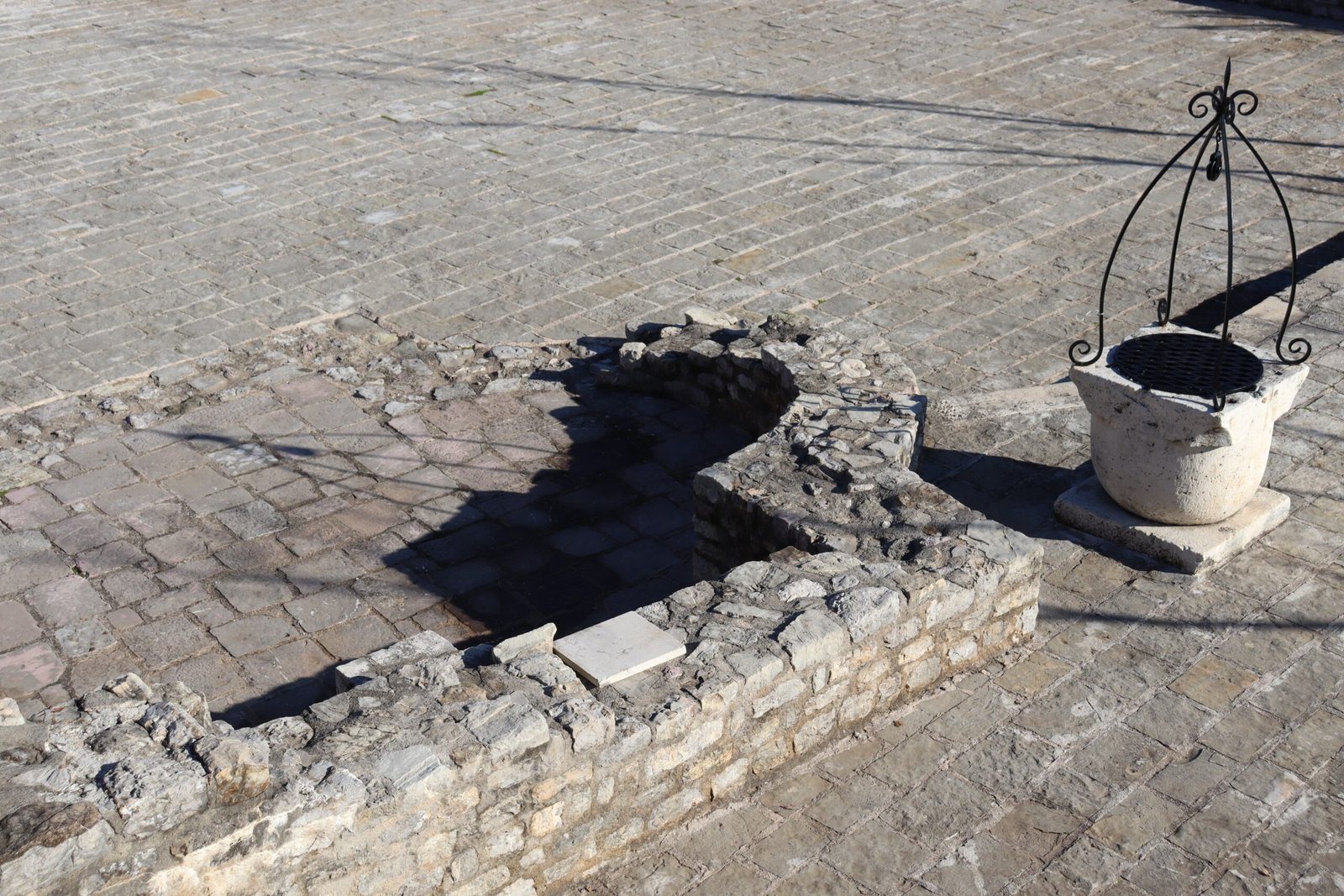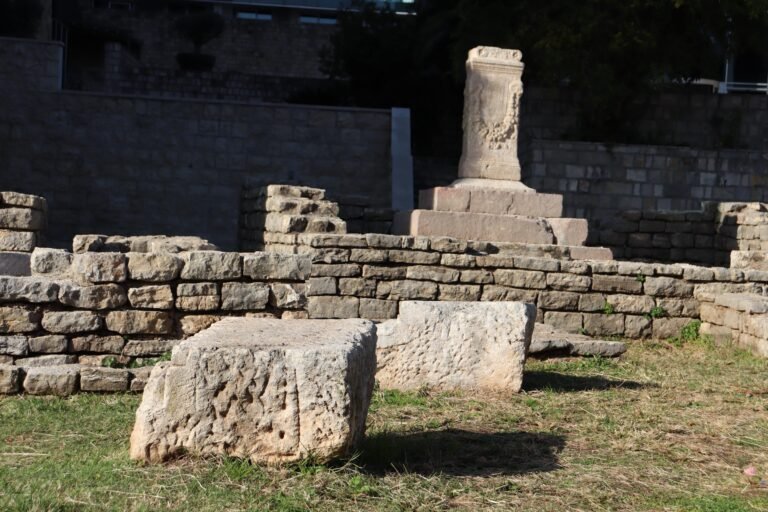The exact construction time of Santa Maria in Castio is unknown. However, due to its architectural form and general construction characteristics, it is dated in time between the 12th and 14th centuries. This period is associated with the reign of Despot Đurađ Branković and the Balšić dynasty – known for their founding endeavours on the territory of the Montenegrin coast. Santa Maria in Castio could have certainly been of exceptional importance given that it is located within the Castelo – the most important and prominent elevation within the Old Town of Budva. Most likely, the church perished in the 1667 earthquake, when the entire Old Town was destroyed. After extensive damage, the church was not restored and its original appearance is not fully known. During the Austrian occupation, from 1797 to 1918, the remains of the church were incorporated into utilitarian architectural spaces. Today, the original parts of the southern wall with the remains of fresco paintings as well as the reconstructed parts of the southern and western walls can be seen

8. Santa Maria in Punta, 9th century
Santa Maria in punta is located in the extreme southwest of the oldest part of the town, near the town walls on the



